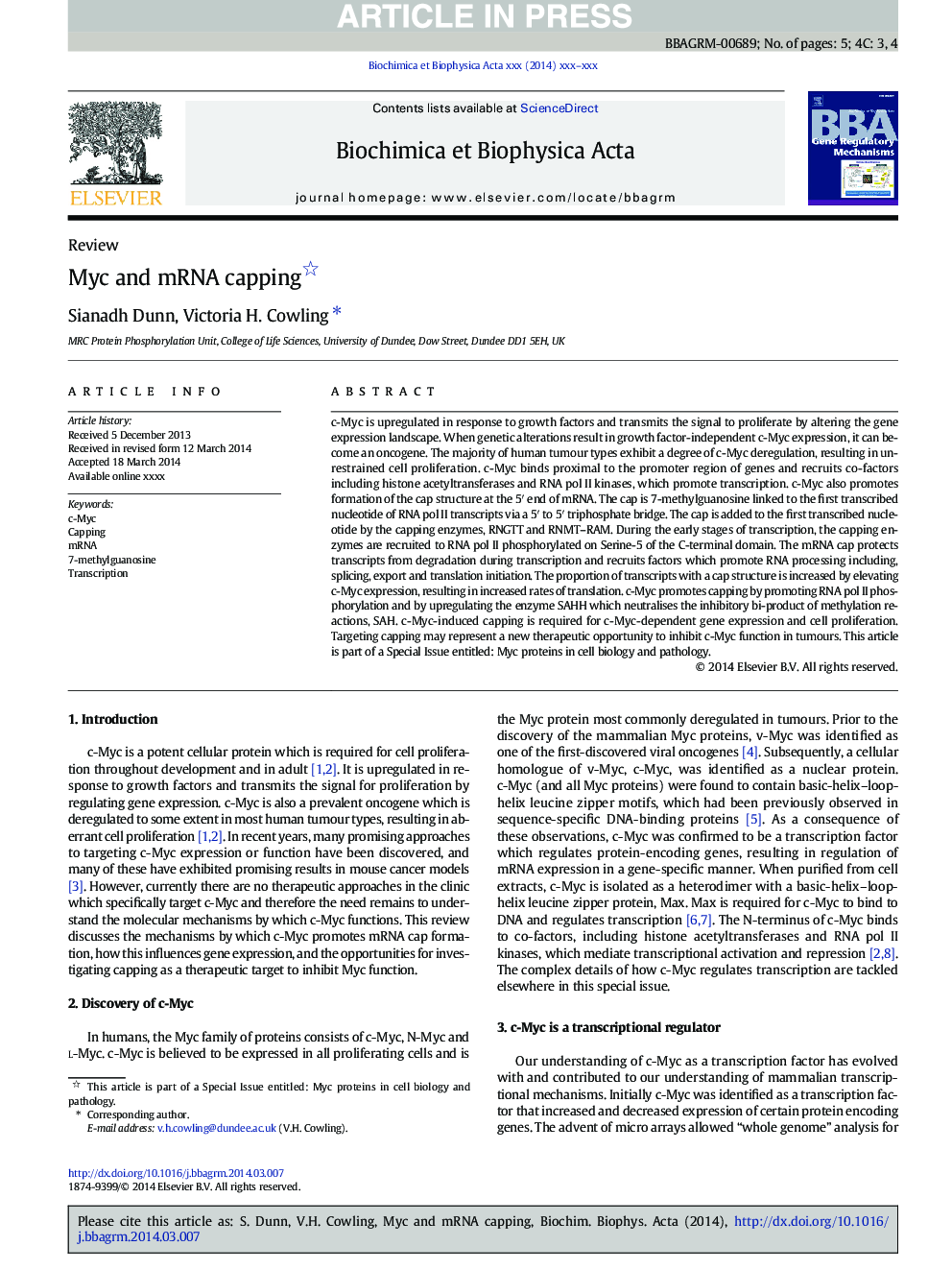| Article ID | Journal | Published Year | Pages | File Type |
|---|---|---|---|---|
| 10798989 | Biochimica et Biophysica Acta (BBA) - Gene Regulatory Mechanisms | 2015 | 5 Pages |
Abstract
c-Myc is upregulated in response to growth factors and transmits the signal to proliferate by altering the gene expression landscape. When genetic alterations result in growth factor-independent c-Myc expression, it can become an oncogene. The majority of human tumour types exhibit a degree of c-Myc deregulation, resulting in unrestrained cell proliferation. c-Myc binds proximal to the promoter region of genes and recruits co-factors including histone acetyltransferases and RNA pol II kinases, which promote transcription. c-Myc also promotes formation of the cap structure at the 5â² end of mRNA. The cap is 7-methylguanosine linked to the first transcribed nucleotide of RNA pol II transcripts via a 5â² to 5â² triphosphate bridge. The cap is added to the first transcribed nucleotide by the capping enzymes, RNGTT and RNMT-RAM. During the early stages of transcription, the capping enzymes are recruited to RNA pol II phosphorylated on Serine-5 of the C-terminal domain. The mRNA cap protects transcripts from degradation during transcription and recruits factors which promote RNA processing including, splicing, export and translation initiation. The proportion of transcripts with a cap structure is increased by elevating c-Myc expression, resulting in increased rates of translation. c-Myc promotes capping by promoting RNA pol II phosphorylation and by upregulating the enzyme SAHH which neutralises the inhibitory bi-product of methylation reactions, SAH. c-Myc-induced capping is required for c-Myc-dependent gene expression and cell proliferation. Targeting capping may represent a new therapeutic opportunity to inhibit c-Myc function in tumours. This article is part of a Special Issue entitled: Myc proteins in cell biology and pathology.
Related Topics
Life Sciences
Biochemistry, Genetics and Molecular Biology
Biochemistry
Authors
Sianadh Dunn, Victoria H. Cowling,
